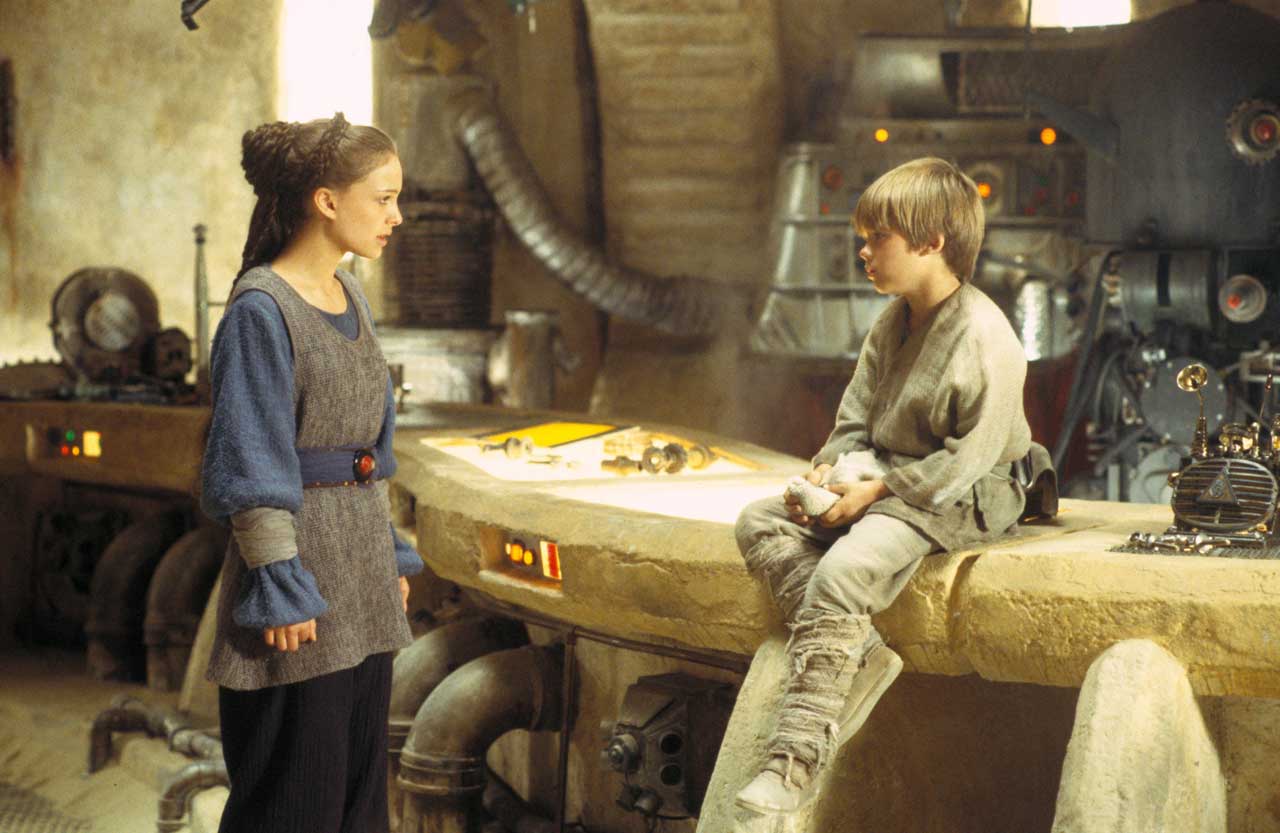When considering an answer from canon sources (which I think you are defining here as the movies, plus interviews with production staff), I think the main premise of the question doesn't hold up.
I contend that the technology of the prequels is not more advanced, it just feels that way.
Differing Priorities
The technology of the Republic (and especially of Naboo) reflects a wholly different set of priorities than the technology of the Empire.
A crude summary:
- The Republic cares about aesthetics. They want their technology to look pleasing.
- The Republic was reluctant to maintain large standing armies during a time of what seemed like peace.
- The Empire wants to be intimidating. They rely on fear to discourage rebellions.
- The Empire cares about results most of all. It doesn't care about life. The Empire is brutal and efficient.
Following on from this, in our own culture we also place a high priority on how our technology looks. Sleek, attractive technology is what feels "modern" to us. So when we see the Republic/prequel technology, which more closely aligns to our own ideals, it gives us a more modern and sophisticated impression.
Conversely, the Empire is happy to go with something that's crude and cheap if it gets the job done, even at the cost of the lives of their soldiers. The tie fighter is a good example of this. And when they go for big and intimidating, that elegance which we associate with high technology once again does not fit in with their priorities.
Here's a quote from Doug Chiang, the Design Director on Episodes 1 and 2 (source):
If you look at Episodes IV, V and VI as the peak of the industrial revolution design in terms of manufacturing – where everything was stamped out for mass quantity – we were now going back to the craftsman era where everything was hand crafted. Every vehicle and design was a piece of art. That was the approach that I took for the Naboo Starfighter and also the Queen’s ship.
Droid Armies
I think the movies portray a situation where the Empire could have a droid-based army, but chooses not to.
- Droid technology is still in common use during the period of the Empire and the Rebellion, they're just not shown as being the backbone of combat forces for either side. (The Empire uses armed probe droids, both sides use repair and medical droids, etc.)
- Droid armies are probably still associated with the separatists, and at least in the period leading up to Episode IV the Empire still cares a little bit about appearances.
- Droids don't actually have a combat advantage vs people. It seems like they should, logically, but the prequels show them as equal or perhaps inferior.
- I think the prequels imply that the Trade Federation went with a droid army because they had lots of money but not many people available. Especially people willing to fight/die. The full separatist faction then built from those beginnings.
Technological Advances
I think it's fair to describe both Imperial Star Destroyers and the Death Star as significant technological advances, well beyond what was available to the two sides in the clone wars.
The Death Star in particular was unprecedented. Consider Han Solo's incredulous reaction when Obi Wan first suggests the "moon" is a battlestation. He was an experienced smuggler familiar with Imperial forces, and yet utterly taken aback by what they had built.
Luke and His Uncle
Owen buying second-hand droids from questionable sources was more a reflection of his specific situation rather than the technology available within society generally. Tatooine is a backwater planet, and he's a not-very-well-off moisture farmer. The farm is doing okay, but he mentions not being able to afford to hire more help so that Luke can leave to follow his dreams. This is at least partially an excuse to keep Luke from going, but even so he probably just can't afford new droids.



